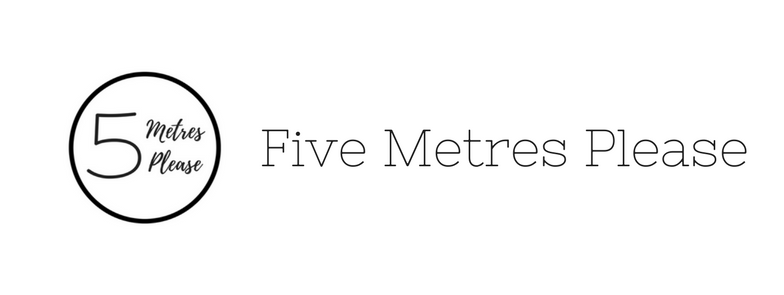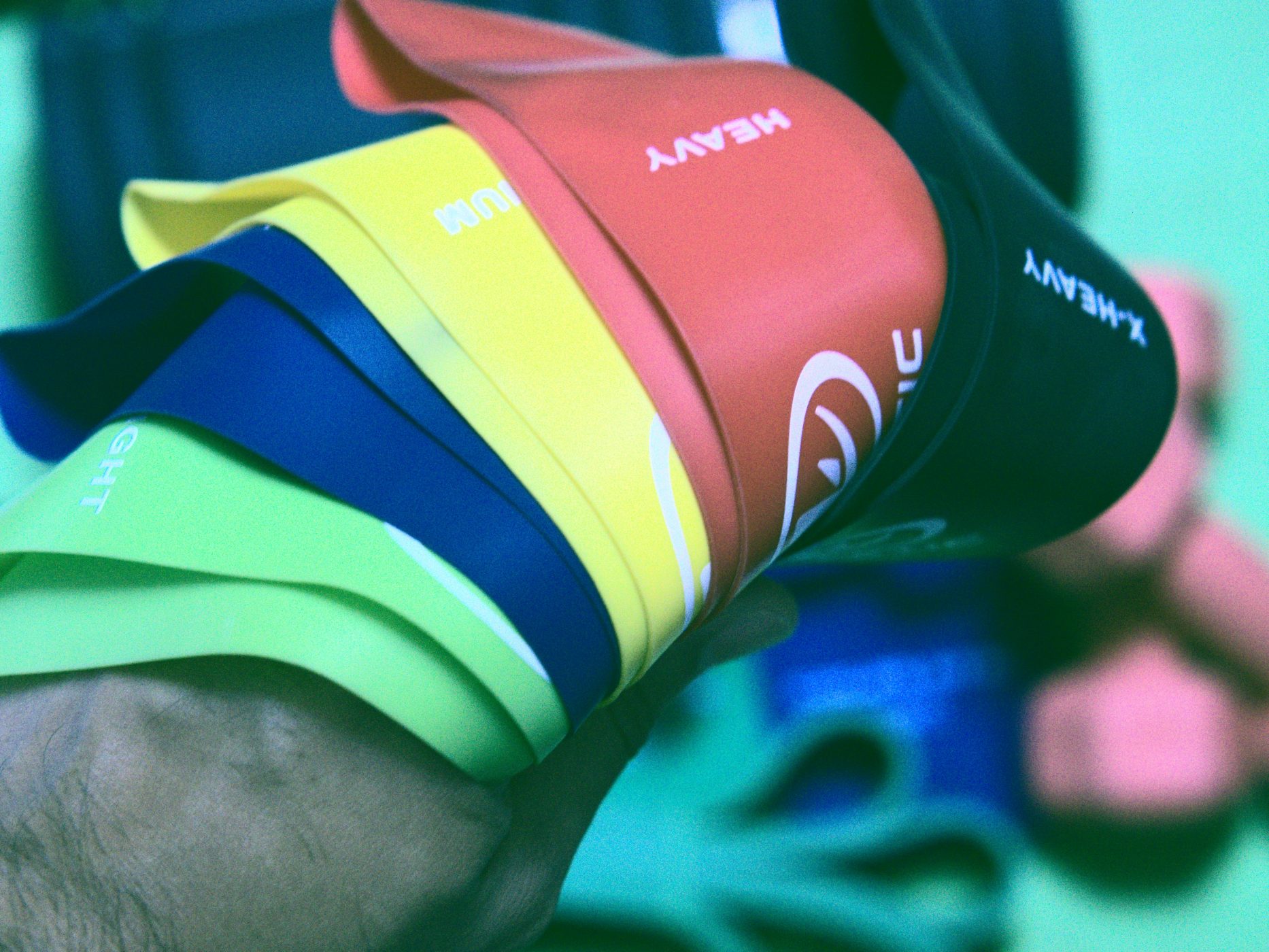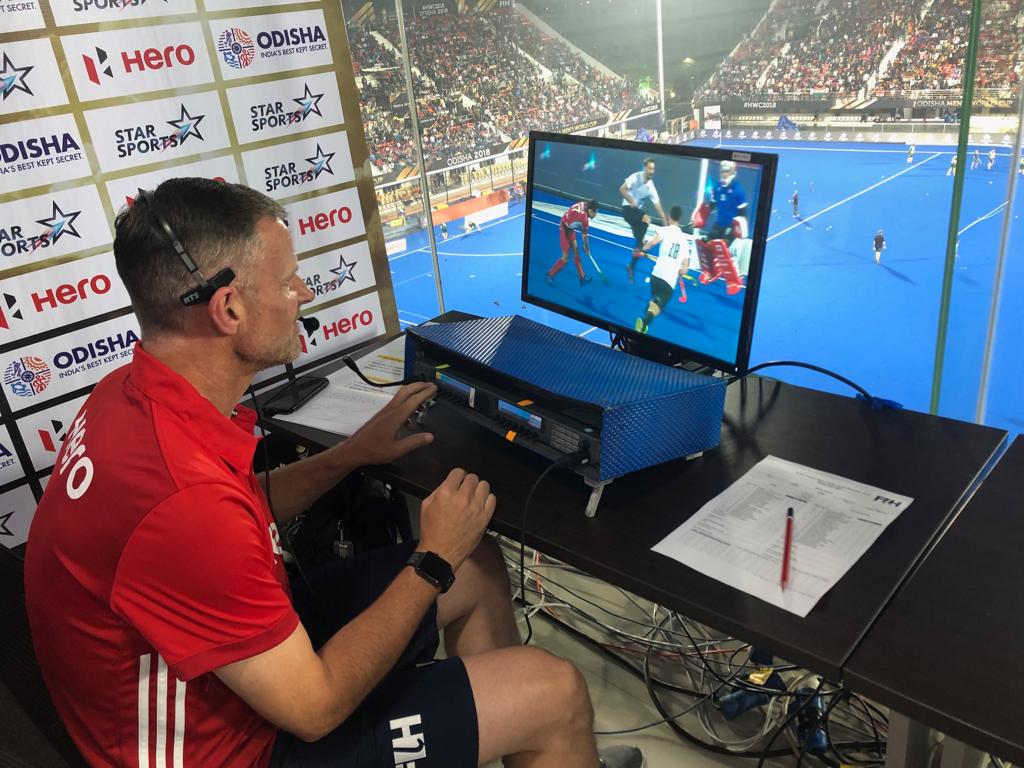The Pre-match Talk

Ahhhh the pre-match talk – the most under-rated part of an umpire’s preparation. Yes, I see your guilty side-eye. You can’t hide from me. Don’t worry, we’ve all skipped out on the pre-match talk at some stage. BUT, I bet you found yourself thinking during the match “hmmm we probably should have talked about that before the game”.
So, make sure you’re the most prepared you possibly can be by having a chat to your co-umpire (and technical bench if you’re lucky!) before the game. Lead by example and start the conversation. Even if you’re not the “senior umpire” for that game, show how enthusiastic you are initiating the talk. Don’t rely on the other person to bring it up. After all, you’re benefiting your performance AS A TEAM by sorting out what you’re doing before the match.
“But I umpire with the same person almost every week!” I hear someone shout from the back – even then my friend, you still need to have a chat about the game beforehand to make sure you’re on the same page! And the pre-match chat is SUPER important if you’re umpiring together for the first time. Or only every so often. Or regularly.
Really, it’s super important ALL THE TIME!
So, what should you actually be talking about in your pre-match chat? Well, I’m going to un-pack it below, but basically it can be summarised into:
- Areas of control – who blows what, where.
- Communication – how and when you’ll communicate with each other (are you using radios? A special talk about these is helpful!)
- Game management – Consistency in dealing with infringements. What to do when things get heated. Anything special you need to know about today’s game? WHAT’S PLAN B?
- Penalty corner and overhead assistance – what to look for, where/when to provide help, who will blow where.
- What are you working on? What are you trying to improve this game?
Here’s a handy print-out to take along to your games to help direct your pre-match talk. Fold it over, laminate it if you like, and keep it in your umpiring bag. Youuu’rreee welcome! (I made this myself, in Word. It was a painful experience. Please print it. THANKS.)

Let’s go through those points in more detail…
(P.S. This looks like a lot to talk about when you write it all down, but a normal pre-match talk encompassing all these things usually only takes about 10-15 minutes. Sometimes less. It’s a worthy time investment to perform as a SUPERSTAR TEAM though. Because you’re worth it.)
The Pre-match Talk
The basics
Get the basic stuff out of the way first. Choose which side you’d like to take, and if you can’t decide or you both don’t care, a good game of rock, paper, scissors or a flip of a coin sorts it out quick smart.
Important factors to consider include where the coaches and crowd are. If you’re working on keeping calm under pressure, then it’s good to take this side! If you’re new to the grade you’re umpiring, then often the more experienced umpire will offer to take the coach (and/or crowd) side. Sometimes you don’t get an easy choice if the coaches are on one side and the crowd is on the other!
Decide who will keep ‘official’ time if you don’t have a tech bench (you should both keep time just in case something happens, but usually only one person blows to start and end the game).
Will you manage your own cards or will one person manage all of them (who will bring players back on after they’ve ‘served their time’?).
Something a little left-of-field, but important to consider nonetheless, do you need to talk about the weather? Is there a storm on the way? Is it bucketing down with rain? Is it scorching hot? Have a chat about if there will be a potential need to stop the game because of inclement weather, and when you will do this.

Areas of control
Ok, getting into the nitty-gritty. This means talking about who is going to blow in which area. This is a really important thing to discuss as it avoids double whistles, or no one blowing something, or in some cases “coat hangers”. THE HORROR. This is when one umpire blows in one direction and the other in the opposite direction. Mass confusion ensues! The struggle for power begins! The world turns to chaos! What even is the point of anything? WHAT IS THE MEANING OF LIFE?! I digress…
But if you can avoid these happening, it’s better for everyone. Trust me.
So, what should the areas of control look like? Here’s a handy diagram 🙂
 Basically, you have control of your circle and down your entire sideline. The other circle and sideline are under your co-umpire’s control obviously, but you can provide assistance if they ask. In the middle of the field, if the play is coming towards you, generally it’s your responsibility, unless there is a push in the back or you missed something. Likewise, if the play is moving towards your co-umpire, leave it for them, unless there’s some kind of infringement that they can’t see or that maybe they’ve missed.
Basically, you have control of your circle and down your entire sideline. The other circle and sideline are under your co-umpire’s control obviously, but you can provide assistance if they ask. In the middle of the field, if the play is coming towards you, generally it’s your responsibility, unless there is a push in the back or you missed something. Likewise, if the play is moving towards your co-umpire, leave it for them, unless there’s some kind of infringement that they can’t see or that maybe they’ve missed.
But you know all this. It’s pretty standard. The main thing I like to specifically talk about before the game, in terms of areas of control, is who will blow where AROUND THE CIRCLE. This is important, particularly on the other side of your circle, because:
(a) it can get pretty crowded in the circle sometimes, and looking through all those legs is hard and sometimes you just need a helping hand.
(b) something happened on the way towards the circle, you’re allowing some AMAZING advantage and then your co-umpire goes and blows their whistle because they thought you missed it or they thought it was their area.
(c) the attacker fouls on the other side of the circle, but you can’t see through all the players – but your co-umpire thought that was ‘your area’ and didn’t want to step on your toes. The attacker runs into the circle and gets a PC/scores. This is a big, game-changing moment that could have been avoided through a quick chat before the game.
THAT’S is why it’s important to talk about it before the game.

I generally tell people that they have complete control on their sideline in the 23 metre area, up to the dotted 5m circle. That’s all theirs. So, when the defence is working it out on the far side of the circle, I leave that for my co-umpire, unless they miss something that I see. But if they could leave the circle and from the top of the circle to the 23 to me, that’d be great. I ask my co-umpire to hold their whistle within the 5m dotted circle – this allows me to play advantage into the circle. They should only blow in the dotted 5m if I miss something, and they’ve made sure I’m not playing advantage (particularly to the attacking team).
This is what works for me, but of course I’m open to different ideas if my co-umpire is used to something else or doesn’t feel comfortable blowing so far down towards my circle. We work it out together. In our pre-match talk.
Remember, we’re out there to work as a team and get the best outcome for the game. Sometimes this will mean leaving something small our co-umpire has missed if it means blowing deep in their area and it’s going to take away their control or authority. But sometimes it means helping a friend out and blowing it for them, especially if it has the potential to impact the game in a big way. This is where talking about what to do in these situations before the game is a lifesaver. You look and feel like a team because you’re working together and you’re on the same page.
Using radios, if they’re available to you, can also be INVALUABLE because you can just whisper in their ear to blow instead of blowing for them. Nothing gets missed and they/you still look like a superstar. Win-win!
This looks like a lot of information, but when you actually talk through it, it shouldn’t take more than a minute or two. Easy! Then you move on to…

Communication
After talking about areas of control, the most important questions I ask are:
How would you like me to help you?
If I need help, where should I look for you? And how will you help me?
Working out HOW and WHEN each of you would like help is a big one. Everyone is different, so in order to work as the best team possible, talk about what you like. Do you only want help if you ask for it? How will you ask? Looking to the person? How should they signal? Only when you look up? Big signal or small? SO. MANY. QUESTIONS.
But actually, not really.
It usually boils down to – if I look at you, give me a big signal. This avoids confusion and lets everyone know you’re working together as a team. It’s not good practice to signal if the person isn’t looking at you because, if you signal something else, then this shows the crowd/coaches/players that you’re not on the same page and opens both you and your co-umpire up to criticism.

As to the second question, this basically comes down to asking your co-umpire how far down the field they come. Most people will generally be hanging out somewhere near the 25m line when the play is in your circle. Asking them where they will be will let you know if you should be looking for them closer to the half line or even further down in your 25m area. This just makes life a little easier so that you don’t spend a valuable few seconds looking for them instead of getting their help straight away.
Also check with one another how you will keep in contact throughout the game – it can get lonely out on the field, and knowing you have a friend on the other side is very comforting. Maybe you will look at each other every 16 yard hit, just to make sure you’re keeping eye contact? Or give your colleague a thumbs up or a funny face every now and then to make sure they’re feeling the love from the other side of the pitch.
It’s also good to just clarify with each other that, of course, you will meet in the middle to have a chat about big decisions if needed. This is best done when you’re not exactly sure what happened, or if your co-umpire saw something different to you. Talking about it quickly sorts the situation out and is much easier than sign-language across the pitch! It’s also useful if you speak different languages (something that will definitely happen the higher up the ladder you climb – find out more about the different gradings and how to climb the rankings here)
Side note: Communicating with radios
If you’re lucky enough to be using radios in your game, make sure you include this in your pre-match chat. You should be talking about how and when will you use them. You can also check out this post on How to Use Radios. Again, everyone is different and working out the best way for the both of you is a good idea. Often, when people are new to using radios the following things happen:
- They find them really distracting.
- They talk into them way too much OR
- They don’t use them at all
It’s funny, and a fine balance. If you find having someone talking in your ear really distracting, make sure you tell your co-umpire! Ask them not to talk to you unless they really need to. If they talk to the players a lot during the game, ask them to say your name when they want to talk to you. And if you’re one of those people who talk a lot, be mindful of your co-umpire and respect their wishes if they don’t like that so much.

It can also be hard to understand people over the mics sometimes, so bring that up if it’s an issue for you too.
I found this to be my main problem when I was umpiring in Germany, or when I’m umpiring with international colleagues who speak English as a second language. I talk a lot and often too quickly, which when paired with my Australian accent, people often found it difficult to understand what I was saying over the microphone even if they could understand me just fine in real life (read more about these experiences here and here).
Talk about just using one or two words and what these will be. For example “PC. Foot.” or “Free hit. Obstruction.” Always say the decision/direction first, THEN the reason. I’ve had a few funny cases of “Foot. Foot! Foot!” “WHOSE FOOT?!” Hahaha.
As a side note, it’s also good to find out if your radio communications will be broadcast over a live stream or TV! Especially if you like to talk a lot. To your co-umpire. About the game. Whilst this can be entertaining for the two of you, it’s often inappropriate for broadcast. Leave the “HOW DID THEY MISS THAT OPEN NET?!” to the commentators… 😉
Game Management
Consistency is key to a great team umpiring performance, and it begins in your pre-match talk.
Talk briefly about how you will deal with infringements so that you are both on the same page. What’s in your “tool box” and when you use it (green card, yellow card, captains, etc.).
Talk about what you will do when tensions escalate and the game heats up. What will you do to maintain control and calm things down? A good technique here is to shorten the advantage (blow quicker free hits) so things don’t get away from you. How will you signal this to each other?
Talk about setting the standards early – 5 metres, clean tackles, back chat. How will you deal with these in the first 10 minutes of the game?
Is there anything special you need to know about today’s game? Is it a top of the table clash for a spot in the finals? Is it a grudge match? Knowing this in advance will help you prepare for potential flare-ups, and talk about how you will handle them together.
And finally, what’s your PLAN B? If it all comes crashing down, what is your back up plan?
WRONG OBAMA. You obviously didn’t have a pre-match talk. Rookie.
Assistance on Penalty Corners and Overheads
Talk briefly to confirm what the disengaged umpire is looking for, and will provide assistance with on PCs (ball on-goal or missing, ball height, attackers breaking, etc.). Talk about what you’d like to do if the attackers break on the circle – will you let it play out and change if they influence? If you’re using radios, will you tell the controlling umpire who will then deal with it? I personally like to identify a break on the circle as soon as it happens, and prefer the disengaged umpire to call it. It just makes everything clearer and smoother. But everyone is different, so sort it out before the game.
With overheads, have a chat about who will blow the landing zone and the… up(?) zone? Launch zone? That kind of sounds like a rocket… anyway… in the landing zone, if the players are side-by-side, it’s generally easier for the controlling umpire (the person who’s side it’s on) to judge the 5 metres. If one player is behind the other, it’s easier for the person across the field to judge THAT 5m distance. Just be clear on who is blowing what so there’s no confusion, or worse…DOUBLE WHISTLES.
What are you working on?
Finally, let the other person know what you are working on that game so that you can give each other some feedback at the end of the match! The best way to learn is to practice, together!
So, that covers just about everything. You should leave around 10 minutes for your pre-game talk, maybe a little longer if it’s your first time umpiring together or if you’re at a tournament. Like I said, what we’ve talked about here seems like a lot, but actually this chat will fly right by and you’ll be out on the pitch before you know it! But you’ll be the best team on the block, because you’re on the same page. Go get ’em, tigers!
What do you cover in your pre-game talks? Did I leave anything out? Let me know in the comments below! And if you think other people might find this useful, please share it around through social media or by using the buttons below 🙂 Sign up for the newsletter to get new posts delivered straight to your inbox, and follow me on Facebook, Instagram and Pinterest for extra tips, tricks and behind the scenes banter!






You must be logged in to post a comment.